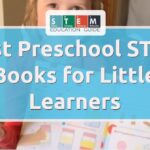The contemporary landscape of education in the U.S. has transformed in numerous ways, including the recent integration of Artificial Intelligence (AI). Lately, AI has become an integral part of modern education, reshaping how teachers work and students learn. AI creates both opportunities and challenges, saving time while introducing ethical considerations, such as age limits and the role of AI in assessment.
This article explores the multifaceted impact of AI on modern education, delving into how teachers can use AI to support their work, the importance of crafting questions and prompts to prevent AI from doing the work for students, and the age limits surrounding AI platforms like ChatGPT.
Table of Contents
How Teachers Can Use AI to Support Their Work

AI has the potential to revolutionize various aspects of teaching, making educators more effective and efficient. As stated on the Michigan Virtual blog:
”While the foundations of teaching — like personal connection and relationship-building — may be impossible to automate, other educational fields, such as instructional design, may be ripe for disruption or rapid evolution thanks to artificial intelligence.”
Here are some ways teachers can leverage AI to enhance their work:
Lesson Planning
AI-powered tools can assist teachers in creating customized lesson plans. For example, these tools can enhance existing lessons by analyzing student performance data and suggesting personalized resources and activities. Or, they can simply outline basic lesson plans and resources on a given topic to get the teacher started in their work.
Automated Grading
Grading has always been a major source of procrastination and drudgery for me. AI-driven grading systems can reduce this struggle. These systems can evaluate multiple-choice questions, quizzes, and assignments, allowing teachers to focus on providing more detailed feedback on complex tasks. In this way, automation streamlines the assessment process and ensures quicker turnaround times.
Adaptive Learning Platforms
AI-powered adaptive learning platforms can assess students’ strengths and weaknesses and adjust the curriculum accordingly. These platforms offer personalized content, ensuring that each student progresses at their own pace. Some such platforms that teachers may already be aware of include Lexia, Prodigy, and DuoLingo, among others. Teachers can then use the insights provided by these platforms to tailor their instruction to meet individual student needs.
Preventing AI from Doing Adequate Work for Students
A local school administrator recently shared a useful insight that came up in a district meeting. A teacher asked the library media specialist how she would be able to tell whether students had used ChatGPT to complete their work. The specialist replied, “You won’t.”
Instead, they encouraged the teacher to, “ask better questions.” Or, in other words, carefully craft questions, prompts, and directives that would require learners to do more meaningful work — something that AI wouldn’t be able to replicate.
Here are a few ways to meet this demand:
Complex, Open-Ended Questions
Teachers should design questions that require students to think critically, analyze information, and synthesize their own ideas. These open-ended questions encourage active learning and creativity, making it difficult for AI to provide canned responses.
Divergent Thinking
Educators can encourage divergent thinking through prompts that require students to explore multiple solutions or perspectives — these types of tasks make AI’s limitations more evident. AI often struggles with generating creative and unconventional responses.
Application-Based Tasks
Assignments that require students to apply knowledge in real-world scenarios are less susceptible to AI-driven answers. These tasks demand a deeper understanding of the subject matter and practical problem-solving skills. As a bonus, they are often more authentic to real life situations that matter to our youth.
Constructive Feedback
Teachers should continually provide constructive feedback on assignments, focusing on areas where students can improve, and asking thoughtful follow-up questions. This feedback reinforces the idea that learning is a dynamic process that goes beyond simply seeking the correct answer.
While all of the above suggestions are great practices, you might also consider trying an AI detector, such as GPTZero. With such rapid advancements, though, it’s hard to say whether these types of programs can keep up.
Age Limits Around AI Platforms

While some teachers across the U.S. and around the globe have eagerly embraced ChatGPT or other AI platforms as learning tools, it’s critical to consider any legal age limits before implementing AI activities in your classroom. ChatGPT’s terms of use, for example, state a minimum age requirement of 13 years old, thus rendering this platform off-limits in an elementary setting.
Older students can often benefit from using AI tools in education, but there should still be monitoring and guidance in place. Further, ethical discussions about AI and responsible AI usage should be proactively and thoughtfully interwoven into curricula. Students should learn about the potential biases, privacy concerns, and the responsible use of AI technologies, including citations of sources.
Importantly, schools should always seek parental consent before allowing students to access any AI platforms in class. Engaging parents in conversations around teen internet use and interaction with bots of any kind will help to ensure safety and strengthen understanding in all parties.
Wrapping Up Impact of AI on Education
AI is rapidly reshaping the classroom, but it doesn’t have to be scary — it can even be good. Teachers can use AI to streamline administrative tasks, personalize learning, and provide timely feedback. However, educators must also take precautions to prevent AI from doing the work for students and ensure that students actively engage in critical thinking and problem-solving.
As AI continues to advance, the education sector must strike a delicate balance between harnessing AI’s potential and preserving the essence of genuine learning and human interaction in the classroom. By doing so, educators can prepare students to thrive in a rapidly changing world while upholding the values and principles of education.








